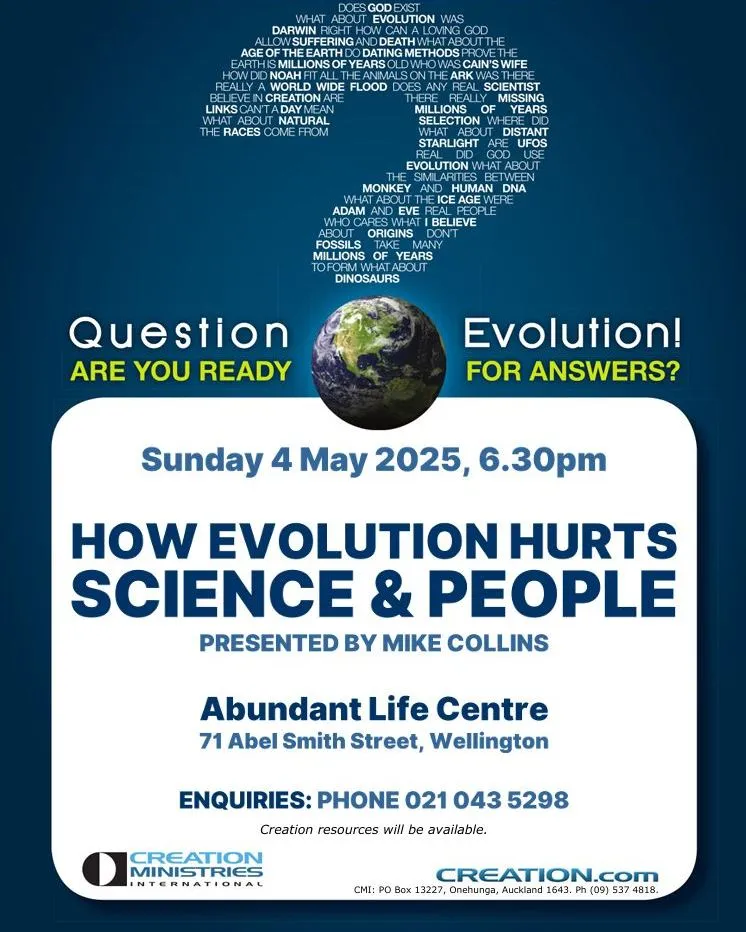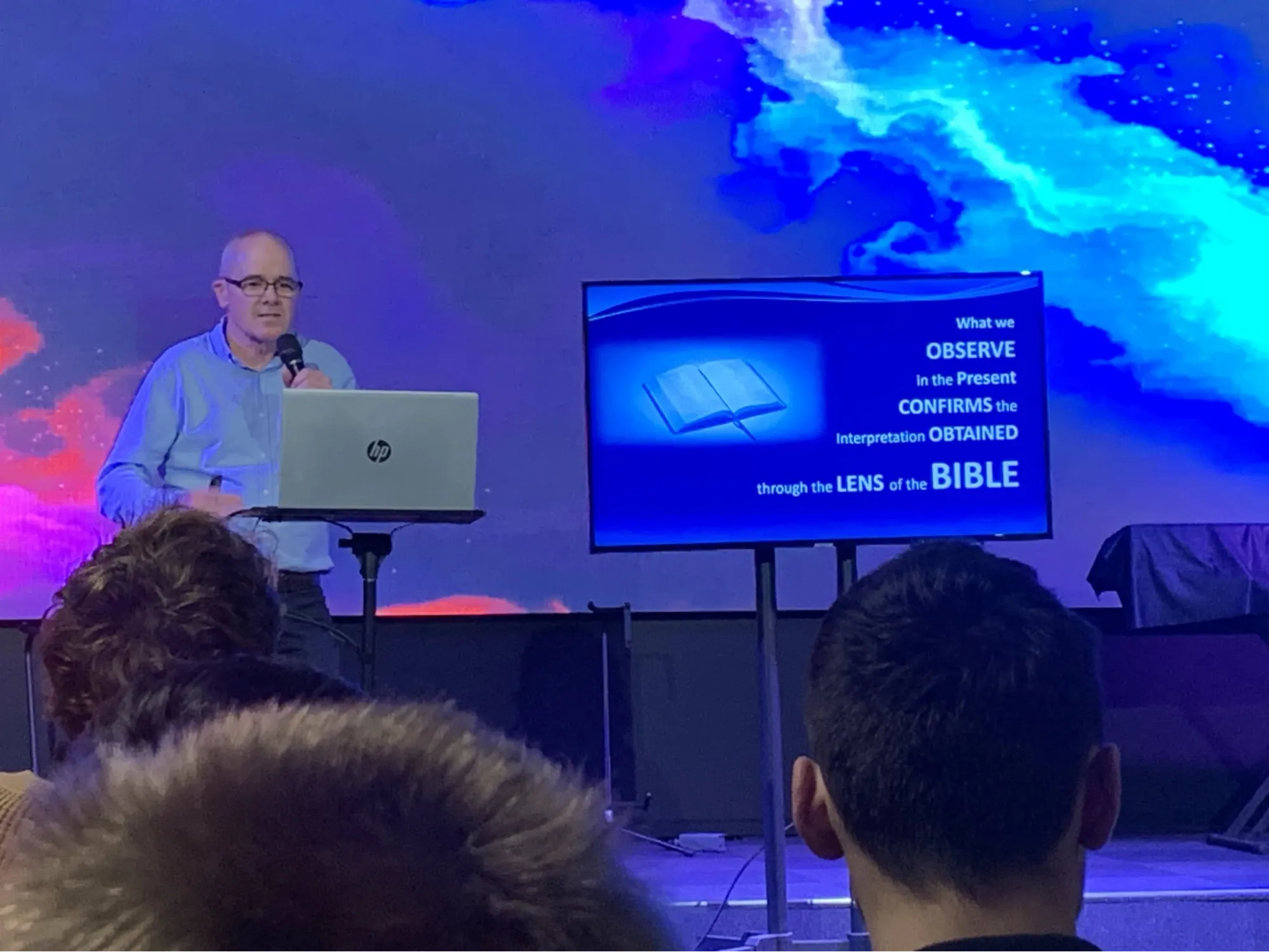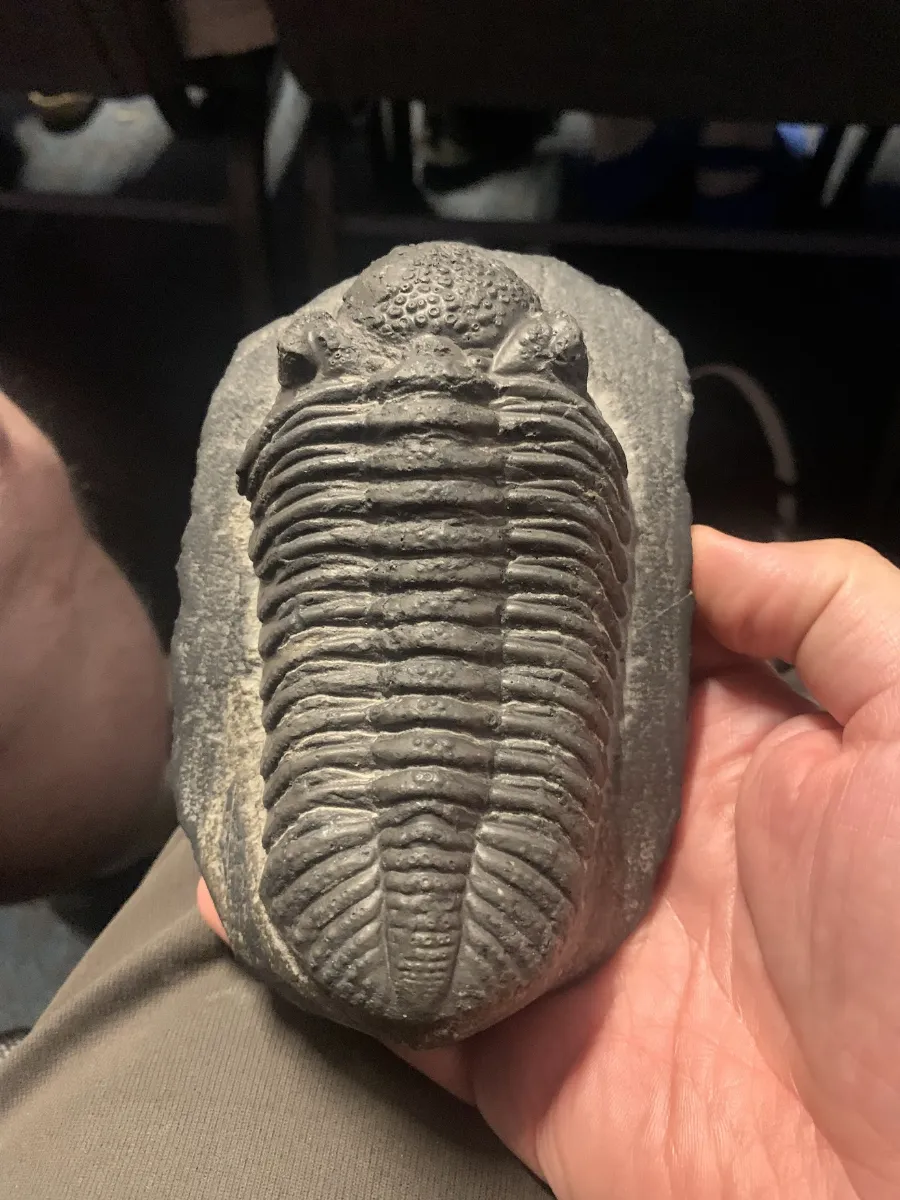How Creationism Hurts My Brain
Mark Honeychurch - 12th May 2025
Last weekend three of us intrepid skeptics attended a creationist talk titled “How Evolution Hurts Science and People”, given by Mike Collins at the Abundant Life church in Wellington. Mike is an aircraft maintenance engineer who, since leaving his real job, has shacked up with Creation Ministries International (CMI), the evangelical Christian group who run the creation.com website and is one of their regular speakers at churches all around New Zealand.

I was joined by both my long-time partner in crime Tim, who has been attending these kinds of events with me now for over 10 years, as well as one of our Skeptics in the Pub regulars (but not such a regular for our excursions - it’s been years since I’ve convinced him to come to church with me), Richard.
To give you an idea of what the evening was like, when we left the church the first thing that came out of Richard’s mouth was:
“Well, that was the worst fucking evening I’ve spent in a very long time”
I have to say that it’s hard to disagree with him on this. I don’t yet consider myself a connoisseur of Creationist talks, but by this point I’ve probably been to a couple of dozen of them, and this was one of the most lacklustre events I’ve witnessed. Mike was dour and monotone, and seemed a little unenthused about his topic of choice - how evolution is a failed theory, and why because of its failure it’s both miseducating people and causing science to spend a lot of time and effort flogging a dead horse.
The congregation for the evening was mostly teenagers, and unfortunately for Mike he seemed unable or unwilling to adjust his pre-prepared presentation for his audience. He talked in a needlessly complex way, using terms that 13 or 14 year olds are unlikely to understand, and lots of big words where more simply constructed sentences would have done a much better job of conveying his message. His apparent lack of enthusiasm also meant that it was hard to keep focused on his message, and I have to assume that this would be even more of a problem for teenagers who are used to snappy, short Tik Tok videos.

The talk itself felt formulaic, mentioning the same tired arguments other CMI speakers bring up in their talks: A fish fossilised with a smaller fish in its mouth, and an ichthyosaur fossilised in the middle of giving birth - something that supposedly, for some unexplained reason, could only have happened if there was a global flood to bury them under sediment.
Radiocarbon dating of fossils was mentioned, with the evidence here supposedly being that when fossils are dated by measuring the amount of C14 in them, the dates that come back are a lot less than the supposed millions of years ago that these fossils were created.
The first problem with this argument is that fossils are, by and large, not the remains of a dead creature - rather, they are usually formed when minerals solidify in the places where the creature once was. There are several methods by which this replacement happens, all of which are fascinating, and if you want to know more I suggest you check out the Wikipedia page on fossils. So, if you’re carbon dating a fossil, you’re actually dating a rock that at some point in the dim and distant past replaced the creature that the rock resembles.
The second issue requires a quick primer on radio carbon dating. The science behind this dating method relies on the fact that plants absorb carbon from the atmosphere, and that these plants are then eaten by animals - so all living creatures should contain carbon from the atmosphere. The atmosphere has a certain ratio of Carbon 12 (C12) to Carbon 14 (C14 - carbon with an extra couple of neutrons), and although that ratio hasn’t been consistent over time, it can be fairly accurately calculated going back thousands of years by using tree rings and other independent methods. So, when something dies, it will die with the same ratio of C12/C14 as the atmosphere had at that time.
After death, when no fresh carbon is entering the plant or animal, the carbon 14 (being unstable due to those extra neutrons) will slowly decay by emitting beta particles until the neutrons have converted to protons, turning the Carbon 14 into Nitrogen 14. So, over time there will be less and less Carbon 14 in something dead. Because the half-life for atomic decay (the time it takes for half of the atoms in a sample to decay and disappear) is always constant - and will not be affected by temperature, the environment, etc - radioactive decay can be used as a stopwatch. For carbon, given that we have a pretty good idea what the C14 level has been historically, we can figure out how old something organic (carbon-based) is by looking at how much carbon 12 is there, compared to how much carbon 14 is still present and hasn’t decayed yet. The less carbon 14, as a ratio to the carbon 12, the older the sample.
But there’s a caveat - at around 10 half-lives, only 1/2^10 (~1/1000th) of the original carbon 14 will be left, and at that point the level of C14 is so low that it can’t be accurately measured. Therefore, other dating methods need to be used if a sample is suspected to be older than around 60,000 years (the half life of C14 is around 5,730 years). My understanding is that if you ask a laboratory to carbon date something very old, or something that has never been living (such as a fossil, which as I said earlier is mineralised material that has replaced the dead thing), they will generally come back to you with a date of something like “> 50,000 years”, along with a warning that this means the date is not reliable, and the sample could be much older.
Of course, when Mike told the audience that many fossils have been radio carbon dated, and that this proves a young earth, what he failed to mention was that although the dates that have come back from fossils are not millions of years in the past (and that could never happen, given carbon dating’s limitations), those dates will not have lined up with his thesis that the world is only 6,000 years old. The dates Mike should expect to see from carbon dating of fossils are between 4,000 and 6,000 years old - when the dinosaurs supposedly died out, at some point after the global flood. But this inappropriate use of carbon dating he was telling us about will have returned dates of “> 50,000 years”, which is incompatible with his just-so story - so all he can do is make sure he never mentions them in his talks.
Mike also seems to be happy trusting in the process of radiocarbon dating (at least in cases where it shouldn’t be trusted), yet mentioned nothing about other radiometric dating methods we’ve developed (methods that also use radioactive decay as a stopwatch), such as Potassium-Argon, Argon-Argon, Uranium-Lead and many others. All of these methods have been used to show that the earth is more than 6,000 years old, and some of them have long enough half lives that they can be used to date the oldest rocks found on earth, dating back more than 4 billion years.
It seems fair to say that, in using this argument about dating fossils, Mike is either massively ill-informed or being horribly duplicitous.
As well as the fossil dating argument, Mike also mentioned blood vessels that were found attached to a Tyrannosaurus Rex bone. I won’t go into details of this one here, but it’s a fascinating story that has been playing out over the couple of decades, with a lot of cool science and some total misrepresentations from creationists. The scientist who first discovered this, Mary Schweitzer, has said of the creationists who use her work as evidence of a young earth:
“Young earth creationists take my research and use it for their own message, and I think they are misleading people about it. Pastors and evangelists, who are in a position of leadership, are doubly responsible for checking facts and getting things right, but they have misquoted me and misrepresented the data.”
At one point Mike talked about how an increased belief in evolution has correlated with increases in both abortion and euthanasia, and showed a graph supposedly linking a drop in church involvement (caused by “evolutionary thinking”) with an increase in divorce, rape and youth suicide. He also drew a direct connection between Adolf Hitler’s decision to murder millions of people and his belief in evolution, saying that “Hitler’s holocaust was clearly inspired by evolutionary thinking” and suggesting that evolution’s idea of “survival of the fittest” drove Hitler to kill those who he deemed to not be fit enough. Oh, and evolution is racist.
As is standard these days for CMI events (which seem like they’re getting just as formulaic as the talks), at two points during the evening a clipboard was passed around the congregation. The first one was for people to sign up to CMI’s mailing list, which I’ve been signed up to for quite a few years now. The second one was the form to subscribe to CMI’s quarterly Creation magazine, at a cost of about $35 a year to receive a printed copy. By now these talks are starting to feel a little like they’re nothing more than a fundraising effort for CMI.
The highlight of the evening for me was the third thing that was passed around the room - a trilobite fossil:

This fossil had been named Doug, and he was apparently buried in the global flood where only Noah and his family, and a few chosen animals, survived. I’m sure that if Doug is in heaven right now, looking down on us, he would be pretty unhappy with the idea that his death millions of years ago is being used by an aircraft engineer in New Zealand to argue for biblical literalism.
If you want to get a feel for Mike’s talks there are a few of them posted on YouTube by various kiwi churches, including this one of a talk that has a different title (“Evolution vs Creation”) but a very similar set of slides and talking points, from last year at Thrive church in Rangiora: